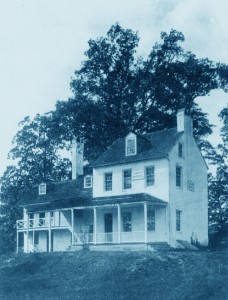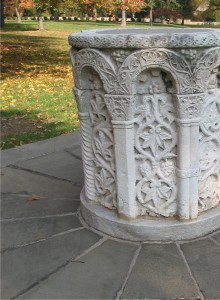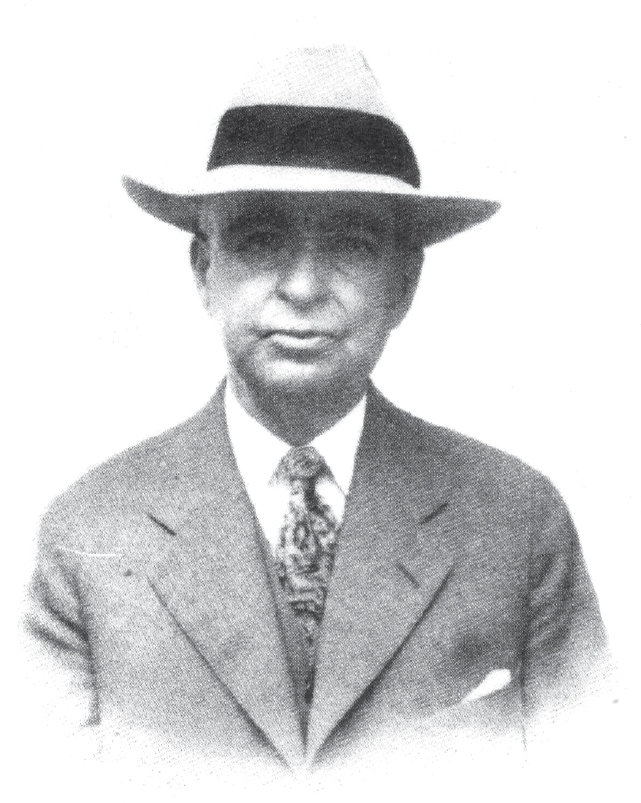
We’re excited to share our latest guest blog post from Tom Hobbs, President of the Guilford Association in a series on Guilford’s 100 years of history. The Guilford Association is planning many great events this year to recognize the centennial anniversary which you can find on their website or on the Guilford Centennial Facebook page.
When the Guilford Park Company merged with the Roland Park Company in 1911, Roland Park had been under development for 20 years. The venture to develop the 800 acres that originally constituted Roland Park was made possible by a syndicate of the Lands Trust Company of London, the source of most of the initial capital, Jarvis and Conklin, their agents in a Kansas City trust company, and a group of Baltimore land owners and investors. Following the market crash of 1893 Jarvis and Conklin filed receivership and shortly after local Baltimore investors bought out the interest of the Lands Trust Company.
Through the restructure of the Roland Park Company and the change in ownership and directors, Edward H. Bouton, the secretary of the original syndicate and overseer and planner of the development, remained the visionary force. He became the general manager, developed Roland Park plat by plat, laid out the streets, installed the water, sewer and electric lines, devised the controls on development and sold property lots.

He engaged Frederick Law Olmsted, Jr., son of the preeminent landscape architect, to design the plat west of Roland Avenue, and was the force behind the extensive planning and innovative ideas that had gained for Roland Park the reputation as a premier example of site design, land use and architectural controls that were modeled in the growing garden suburb movement in America. As observed in the Roland Park History, the planners “were less than innovative in the social dimensions of development, advocating the deliberate exclusion of economic and racial diversity.” Born in Kansas City, Bouton had a varied career before his focus on Baltimore land development. He was in the grocery business after high school and studied law at night. He moved to Colorado to raise sheep and cattle. He returned to Kansas City to marry and there became involved in land development.
How Bouton was selected to steer the development of Roland Park is unclear. His vision for the area evolved as he better understood the Baltimore market, the great attractiveness of the land north of the City and as he interacted with the designers the company had engaged. “Our land is the most fashionable, as well as, naturally the most beautiful part of the suburbs of Baltimore,” he wrote. Clearly Bouton saw the potential of the Guilford estate and the directors of the Guilford Park Company no doubt were impressed with the success of Roland Park. Bouton wrote to Olmsted, asking for a map to be prepared showing the consolidation of the lands of Roland Park and Guilford before it was decided to merge the developments.

The Guilford Park Company had started planning for development of the Abell estate by hiring T. T. Tongue, a real estate expert, but Tongue died before much progress was made. They then hired Frederick Law Olmsted, Jr. to prepare the master plan and landscape plans. Obviously Bouton had established a relationship with Olmsted and likely was fully familiar with the Guilford proposals. When the consolidation of the Guilford and Roland Park Companies took place in 1911 the plans were available and development could shortly begin. Site work started in the spring of 1912.
The directors of the new entity were a formidable force of Baltimore influence: Henry F. Baker, Charles C. Fawcett and Robert Garrett, all members of Robert Garrett & Sons; Douglas H. Gordon, president of the Baltimore Trust Company; William H. Grafflin, business man and investor; George Miller, president of the Mar-Del Mobile Company; and Edward H. Bouton, the visionary planner. Bouton was at the helm as president.
Bouton determined to market Guilford as an extension of Roland Park and ads generally referred to this desirable swath of north Baltimore as the Roland Park-Guilford District. While Guilford was to be developed with housing of various sizes Bouton and the company envisioned a community of the highest architectural style and quality. The restrictions developed in Roland Park were expanded by strengthening the design review process, giving the company the right to reject plans “for aesthetic and other reasons” and to take into account whether the proposed house was in “harmony” with its surroundings.

Bouton and Edward L. Palmer, the Roland Park Company’s architect and later designer of many of Guilford’s most noteworthy homes, traveled to Europe in 1911 looking for ideas and studying the domestic architecture. Together they designed a community that was to become the most desirable suburb in Baltimore, “filled with impressive Georgian revival, Spanish colonial, Tudor and Jacobean revival mansions,” as well as romantic cottages “making it the place to live in the city.”
This piece was originally published in the Fall 2011 issue of The Guilford News. Fourteen years after Bouton’s death in 1941, the Guilford community dedicated a memorial at the Gateway Park to the planner and developer who contributed so much to the development of the neighborhood. Look out for our next guest post from Tom on the history of Guilford soon!


Great article. Thank you for all the research!